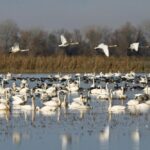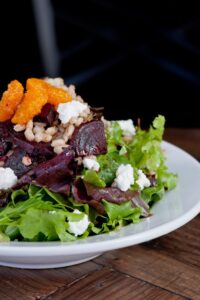
California Bay-Delta Authority Advisor, chemist, Wim Kimmerer
Kimmerer is a researcher at the Romberg Tiburon Center, a research and teaching laboratory of San Francisco State University located in Marin County.
He has a background in chemistry and biological oceanography with interests in zooplankton ecology and the ecology of estuaries with an emphasis on the San Francisco Bay.
Experts agree
there is no clear link between declining fish populations in
the Delta and water exports.
Something is killing the delta smelt and
there is a major effort underway to find out what. However
recent analyses by leading Delta fishery experts indicate
that export pumps are probably not a major factor.
Wim Kimmerer, research scientist with the
Romberg Tiburon Center (San Francisco State University) and
advisor to the California Bay-Delta Authority (CBDA),
reported at the August 11, 2005 CBDA meeting that a number
of fish species exhibit declining populations, including
young striped bass, Delta smelt, shad and others. According
to Kimmerer, scientists have determined there is no clear
statistical link between fish abundance and water exports –
one of most frequently suspected causes.
Kimmerer told the panel the Delta
represents a complex ecosystem and recent declines in some
fish species defy simple explanations. While some species
like Delta smelt are declining, salmon populations are
thriving, he said. And he said there have been major
improvements in the science used to manage the Delta.
Dr. BJ Miller, another expert on Delta
fish, has reported similar findings based on his analysis of
water exports, fish abundance and food sources. Miller said
his research has found no statistical correlation of any
kind – either direct or indirect – between how much water is
exported and the number of fish that survive to adulthood.
In some years when a lot of water is exported, smelt do
fine. In other years when exports are severely curtailed,
smelt numbers plunge.
There is evidence of a strong correlation
between Delta smelt abundance and the availability of the
smelt’s primary food source – zooplankton called
Pseudodiaptomus, which was introduced into the Delta in
1986. In years when there is a lot of Pseudodiaptomus in
the same parts of the Delta where the Delta smelt
congregate, a large number of the fish survive to
adulthood. When there is a shortage of the food source in
the Delta, the numbers of Delta smelt drop sharply.
Legislators hear from expert panel
Members of the California State Assembly Committee on Water,
Parks and Wildlife, during an August 18, 2005 hearing on the
Delta Ecosystem Crisis, heard that there is "no connection
between species decline and export pumping." That statement
was made by Steve Hall, executive director of the
Association of California Water Agencies. Hall stated that
scientists have acknowledged that no connection exists.
Not an isolated problem
Similar problems have also been observed along the Pacific
Coast, as noted in the San Francisco Chronicle. Ocean
plankton have largely disappeared from the waters off
Northern California, Oregon and Washington, mystifying
scientists, stressing fisheries and causing widespread
seabird mortality.
The plankton disappearance is caused by a
slackening of what is known as "upwelling:" the seasonal
movement of cold, nutrient-rich offshore water into areas
near the shore.
While problems in the Delta appear to be
heavily influenced by invasive species consuming the
zooplankton, there is a distinct correlation between the
abundance of food, on the low end of the food chain, such as
zooplankton and phytoplankton, and the health of fish and
bird populations.



